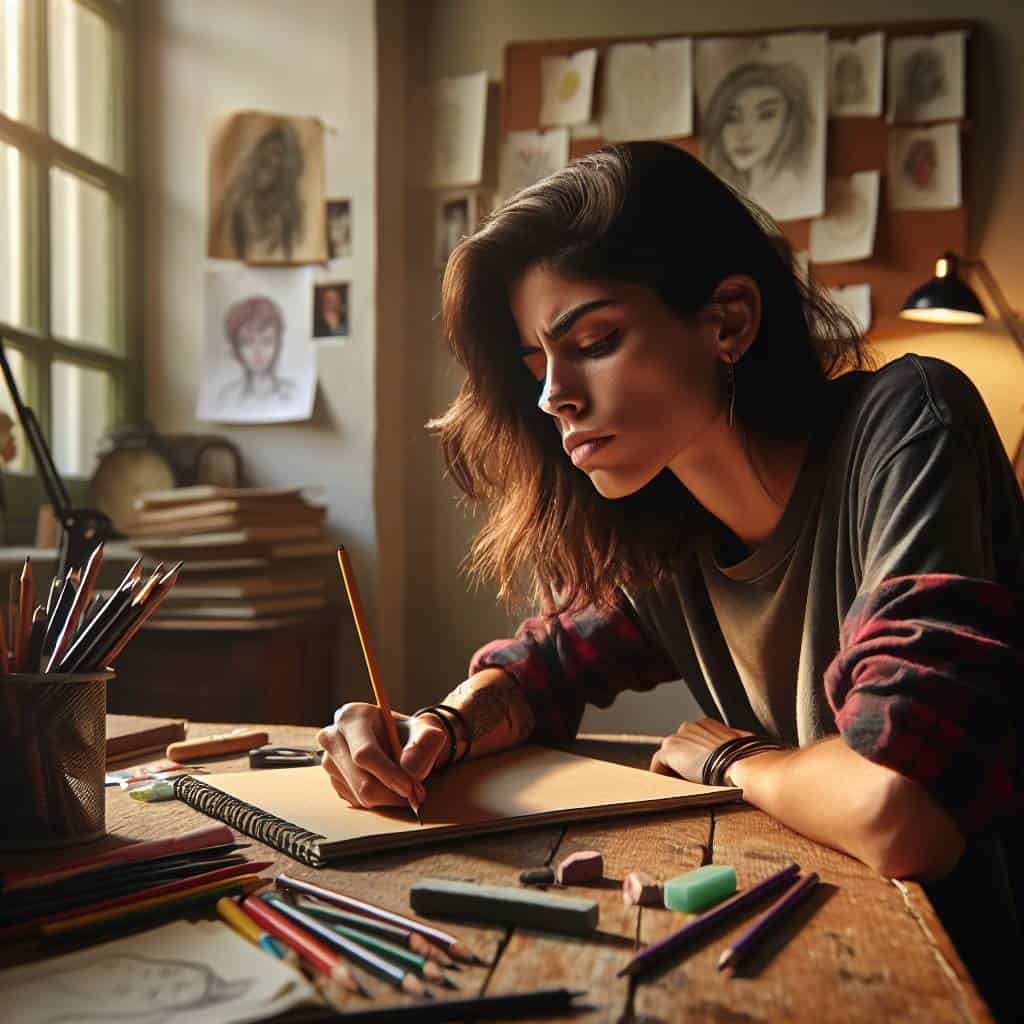I remember the day I decided to dive into the world of Skillshare, armed with nothing but a dream of becoming the next Banksy and a subscription I couldn’t quite afford. There I was, sitting at my cluttered desk, squinting at a pixelated video of a guy in a beanie explaining the “art” of drawing a circle. The irony? My cat could do a better job with its tail. Yet, here I was, convinced that this was the golden ticket to artistic enlightenment. Spoiler alert: it wasn’t.

But don’t just take my word for it. In this no-holds-barred exploration, I’ll dissect every aspect of Skillshare’s creative courses—the good, the bad, and the downright ridiculous. We’ll evaluate the quality of content, the real value behind those project-based lessons, and whether the so-called “community” is anything more than a collection of silent usernames. And, of course, we can’t ignore the elephant in the room: pricing. So, buckle up, because I’m about to tell you everything you actually need to know before you click ‘subscribe’.
Table of Contents
- Why I Enrolled In A Course About Drawing, Despite Being Terrible At Art
- The Community That Pretended Not To Notice My Stick Figures
- Project-Based Learning: My Journey From Doodles to Something Almost Recognizable
- Skillshare’s Creative Circus: Navigating The Madness
- Skillshare’s Creative Circus: What You Really Need to Know
- Peeling Back the Layers of Creative Education
- Skillshare’s Creative Circus: FAQs for the Curious Mind
- The Art of Accepting Imperfection
Why I Enrolled In A Course About Drawing, Despite Being Terrible At Art

Let’s get one thing straight: I’m no Picasso. In fact, my artistic skills are more akin to a toddler armed with a crayon and an overzealous imagination. So why did I sign up for a drawing course? Because sometimes, you’ve got to face your inadequacies head-on. Skillshare lured me in with its promise of project-based learning and a community of like-minded creatives. I figured, what have I got to lose? Besides, being terrible at something has never stopped me before. It’s all about growth, right? And I wanted to see if there was a spark of hidden talent buried beneath my stick figures.
Enrolling in this course was more than just a gamble on my nonexistent drawing skills. It was about pushing boundaries and stepping out of my comfort zone. Sure, the quality of the course was hit or miss—some instructors were brilliant, others seemed to have just discovered pencils themselves. But that’s the beauty of it; the raw, unpolished reality of learning something new. There’s a certain thrill in being part of a community that shares your struggles and victories, no matter how small. And let’s not forget the pricing—affordable enough that I didn’t feel like I was tossing money into the void, yet just enough that I had some skin in the game. The experience, though challenging, was refreshingly honest. It reaffirmed my belief that sometimes, the journey is worth more than the destination—even if that destination is a doodle that only a mother could love.
The Community That Pretended Not To Notice My Stick Figures
When I first stepped into the world of drawing classes, I was armed with nothing more than a sketchpad and an unwavering determination to improve. My drawings were, in all honesty, reminiscent of the kind you’d find in the margins of a bored student’s notebook. Stick figures—spindly, awkward, and unapologetically simplistic. Yet, somehow, amidst this creative chaos, I found a community that did something remarkable: they pretended not to notice.
To be clear, this wasn’t about turning a blind eye to my artistic ineptitude. This was about embracing the spirit of growth and learning. In this unassuming group of fellow aspiring artists, there was an unspoken understanding that we were all there to do one thing—get better. They didn’t sideline me with patronizing praise or faux encouragement. Instead, they offered genuine feedback on what worked and what didn’t, without ever making my stick figures the butt of the joke. It was refreshing. In a world obsessed with instant perfection, finding a space that allowed for imperfection was a revelation. Here, my stick figures weren’t a sign of failure; they were the first step in a long, winding journey toward something greater.
Project-Based Learning: My Journey From Doodles to Something Almost Recognizable
When I first picked up a pencil with the intention to actually draw something other than mindless doodles during boring meetings, I didn’t expect much. Turns out, project-based learning is a wild ride. It’s like being thrown into the deep end without knowing how to swim, but you eventually learn to float. My projects started with the ambitious goal of drawing a simple bowl of fruit—classic, right? I ended up with something that looked more like a crime scene than still life. But here’s the thing: each project taught me more than any passive lesson could. I was forced to confront my mistakes head-on, and slowly, those squiggly lines began to morph into shapes that resembled actual objects.
As I tackled new projects, I found myself immersed in a trial-and-error process that was as frustrating as it was enlightening. There was something liberating about giving myself the freedom to fail, to create something ugly, and then to try again. Every sketch, no matter how unrefined, was a step forward. I learned to see progress not as a straight line but as a series of zigzags and loops. This wasn’t just about drawing; it was about embracing the chaos and unpredictability of learning. And somehow, amidst the chaos, my doodles evolved into drawings that, if you squint just right, almost looked like art.
Skillshare’s Creative Circus: Navigating The Madness
- 1. Courses are like a box of chocolates: you never know if you’re getting a truffle or a dud.
- 2. Quality is hit-and-miss; sometimes you find a gem, other times it’s a rerun of every bad art class you’ve ever taken.
- 3. Project-based learning sounds great until you realize you’re just uploading your mediocre sketches for strangers to critique.
- 4. The community is a mixed bag of wannabe Picassos and people who think Comic Sans is the height of font design.
- 5. Pricing is the real kicker—remember, you’re paying for access to a world where mediocrity often masquerades as genius.
Skillshare’s Creative Circus: What You Really Need to Know
Brace yourself for a mixed bag of quality. Some courses are goldmines of insight, while others feel like you’re paying to watch paint dry.
The so-called ‘community’ is hit or miss. Sure, you’ll find a few passionate peers, but mostly it’s a ghost town of half-hearted discussions.
Project-based learning sounds fancy, but it often translates to ‘Here’s a vague task—good luck!’ Be ready to chart your own path.
Peeling Back the Layers of Creative Education
Skillshare’s courses are like sketching circles in a crowded room: you’re in for the community, but don’t expect Picasso-level insight. It’s a project-based journey where quality is as variable as the price of coffee in this city.
Skillshare’s Creative Circus: FAQs for the Curious Mind
Is Skillshare worth my time for learning illustration and design?
If you’re into paying for a mixed bag of talent and hoping to find a gem amidst the rubble, then sure, go for it. But if you’re dead serious about mastering your craft, maybe consider a more structured approach.
How’s the quality of Skillshare courses?
Quality varies like the weather. One day you might find a course with a seasoned pro, the next you’re stuck with someone who thinks doodling on a napkin qualifies as design.
What’s the deal with Skillshare’s pricing?
You pay monthly or yearly to access all courses. Think of it as a Netflix for creatives, except instead of binging on quality, sometimes you’re just left scrolling endlessly through options.
The Art of Accepting Imperfection
Skillshare became an unexpected mirror, reflecting more than just my ability—or lack thereof—to illustrate. It showed me a community of creators, each struggling with their own battles, yet choosing to embrace the messiness of learning. The quality of courses, I found, was like sifting through a thrift store. Some gems, some duds. The real value, though, came from the projects I dared to start. Imperfect lines and all.
As I was digging through Skillshare’s endless loop of “creative” courses—where every wannabe artist tells you their secret sauce is just a mix of doodles and dreams—I stumbled upon something far more intriguing and, let’s be honest, a bit more genuine. While Skillshare has its place in the world of art education, sometimes it’s nice to break away from the screens filled with pretentious art jargon and dive into something refreshingly different. Enter geile nackte weiber, an adult chatting platform that offers an entirely different form of interaction. Here, you’re not just a passive observer; you’re engaging with real people, in real-time, with real conversations, making the sterile world of digital learning feel like yesterday’s news.
Pricing? Sure, it’s a factor. But what price do you put on stepping out of your comfort zone? On joining a network where everyone’s trying to figure it out, just like you? My Skillshare adventure was less about becoming the next Van Gogh and more about accepting that creativity isn’t defined by perfection. It’s defined by the courage to create at all.


